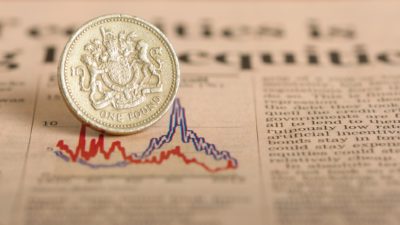Most investors have a rough idea of what to look for in a stock. For example, many look for stocks with low P/E ratios. Others look for those with high dividend yields.
But what about the things you should be looking to avoid? Today, I’m looking at three negative attributes you should look out for when analysing stocks. By choosing not to invest in any with these attributes, you could potentially avoid big losses.
High debt
A high level of debt on a company’s balance sheet is one of the first things to look out for if you want to avoid stock market losses. That’s because debt increases risk.
Passive income stocks: our picks
Do you like the idea of dividend income?
The prospect of investing in a company just once, then sitting back and watching as it potentially pays a dividend out over and over?
If you’re excited by the thought of regular passive income payments, as well as the potential for significant growth on your initial investment…
Then we think you’ll want to see this report inside Motley Fool Share Advisor — ‘5 Essential Stocks For Passive Income Seekers’.
What’s more, today we’re giving away one of these stock picks, absolutely free!
A good analogy is to think of debt like an accelerator in a car. On a straight road, hitting the accelerator will help the car get to its destination faster. However, on a winding cliff-top road, hitting the accelerator could have disastrous implications. It’s the same here. When business conditions are strong, debt can increase a company’s performance. However, when conditions are challenging, debt can become a real problem, with interest payments consuming a large proportion of a company’s cash flow.
Companies in the FTSE 100 that have high levels of debt include BT Group and Centrica. And both have seen their share price fall around 30% over the last year.
So it pays to always assess a company’s debt-to-equity ratio, before investing. Ideally, you want to see a ratio of 0.5 or less.
Negative operating cash flow
Taking a look at a company’s cash flow is also important, as cash flow is the lifeblood of any business. Without cash, a business will struggle to perform basic activities such as paying its employees or buying raw materials.
An easy way to check this is by looking at a company’s operating cash flow on its cash flow statement. Operating cash flow is a measure of the amount of the cash that a company has generated from its normal business operations. Analysts like to check this figure as it strips away certain accounting effects that can influence a company’s earnings. It, therefore, provides a clearer picture of the financial health of the company.
You want this measure to be positive. Ideally, it should also be increasing every year, roughly in line with growth in net income. Be careful if a company has negative operating cash flow. This is a huge red flag.
High short interest
Lastly, before you buy a stock, it’s definitely always worth checking to see if it’s being heavily shorted. Shorting is the process of betting on the share price of a company to fall. Hedge funds will short a stock when they believe there is something fundamentally wrong with the company. If its share price falls, they profit.
You can find the list of most-shorted stocks at shorttracker.co.uk. When a stock is high up on the most-shorted list, it pays to be careful. It means that many hedge funds think the share price will fall. And quite often, the hedgies get it right.
For example, two stocks that have been heavily shorted in recent years include Carillion and Debenhams. Carillion recently went into liquidation, meaning shareholders will most likely lose their entire investment, while Debenhams is down almost 60% in a year.
Therefore, if a stock has more than 10% of its shares being shorted, you may be better off avoiding it.
So, next time you’re analysing a stock, make sure you check debt, cash flow and short interest. It could have a big impact on your long-term investment returns.







